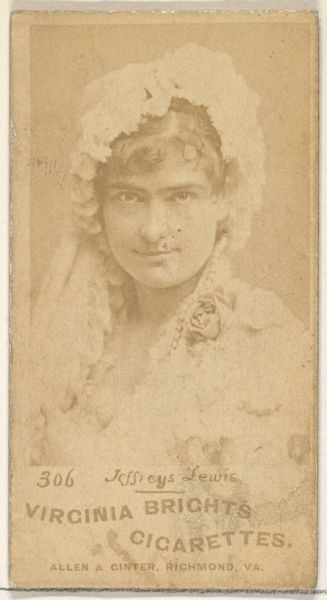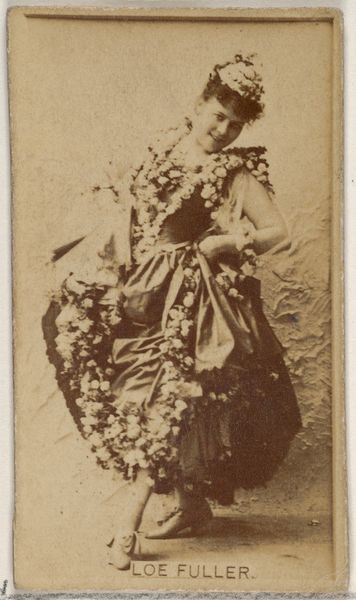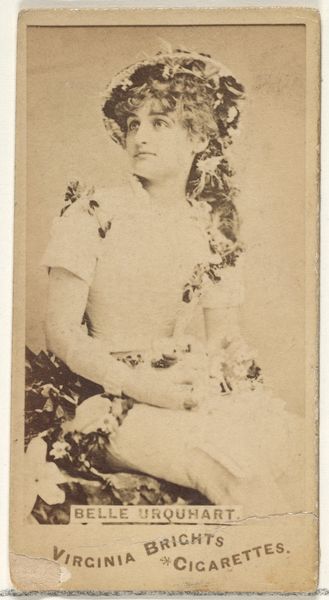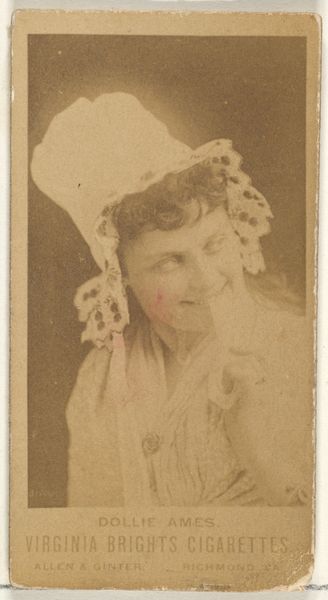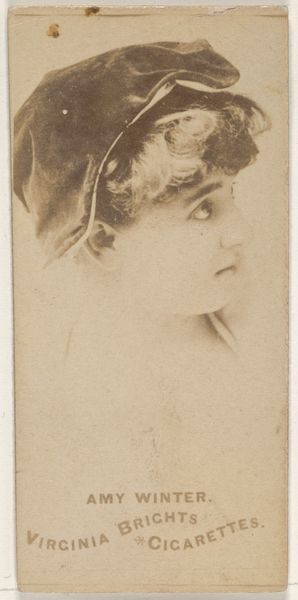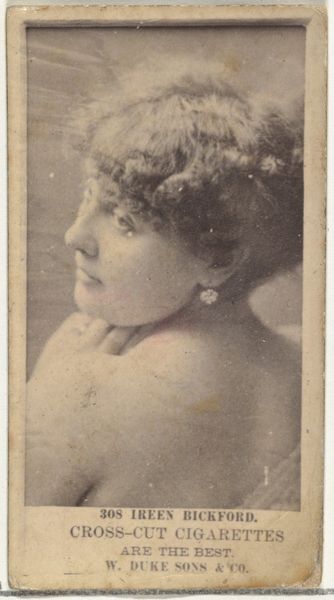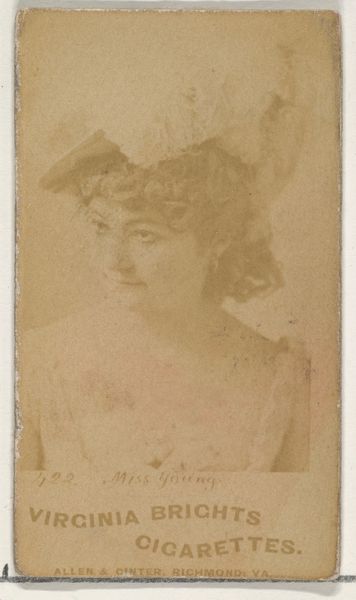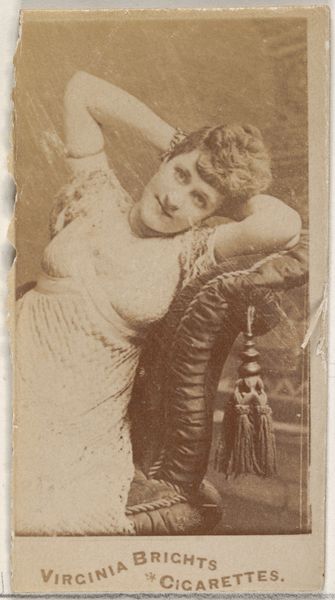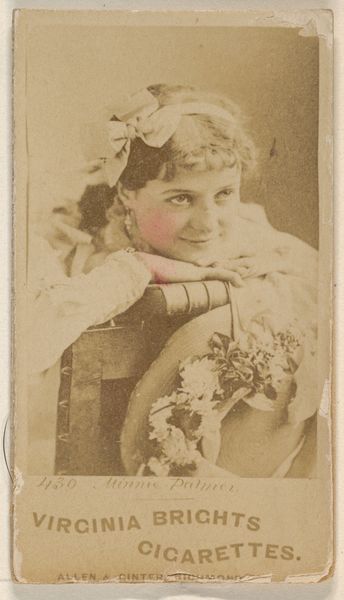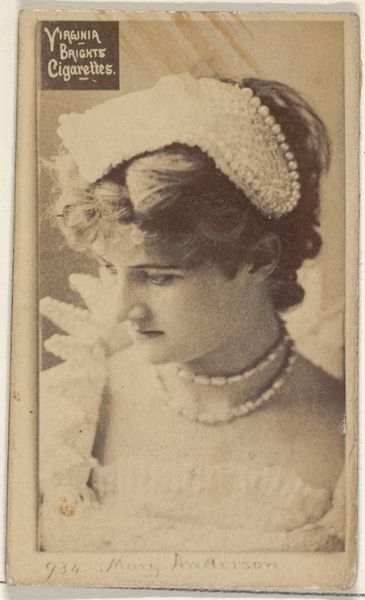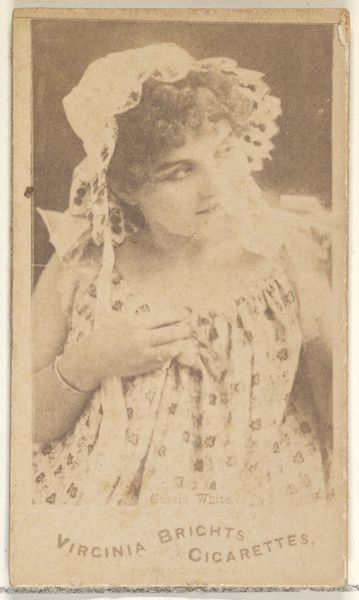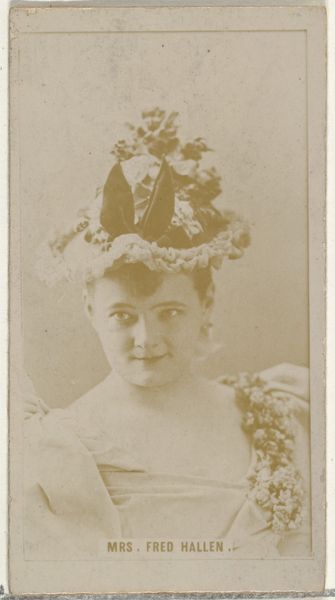
Card 327, from the Actors and Actresses series (N45, Type 5) for Virginia Brights Cigarettes 1885 - 1891
0:00
0:00
drawing, print, photography
#
portrait
#
drawing
# print
#
photography
Dimensions: Sheet: 2 3/4 x 1 3/8 in. (7 x 3.5 cm)
Copyright: Public Domain
Curator: This is Card 327, from the Actors and Actresses series produced by Allen & Ginter between 1885 and 1891. It was a promotional insert for Virginia Brights Cigarettes. Editor: My initial impression is one of slightly faded glamour. There’s an ethereal quality to the subject, enhanced by the sepia tone and ornate, floral decorations. But there's also an element of marketing that I find hard to shake. Curator: Indeed. Formally, we can observe the subject’s direct gaze, establishing an immediate, albeit mediated, connection with the viewer. The use of photographic portraiture in such ephemera also highlights the growing accessibility of photography at the time. It flattens social hierarchies as photographic reproduction allows a larger audience than previously. Editor: Precisely. And that accessibility ties into the burgeoning consumer culture and the commodification of female beauty, specifically in service of selling cigarettes. What does it mean for the power dynamic if actresses must appear to represent unattainable fantasy but are in fact hawking goods to the everyman? The flower imagery becomes almost claustrophobic when you consider that actresses’ images were distributed within tobacco products, thus associating them with notions of delicacy and mortality, smoke and ephemerality. Curator: Yet there’s a conscious construction in the presentation too. The portrait's formal composition draws on classic portraiture traditions. There’s a controlled balance in the framing, which lends it a sense of poise despite its ultimately commercial context. Editor: True, it occupies a precarious position between art, commodity and representation, inviting ongoing discourse. How can an image simultaneously be read as an artistic artifact and a marketing strategy for products causing death and destruction? It's complicated, and worth exploring the different, equally important, interpretive possibilities. Curator: It highlights the nuanced relationship between art, industry and society at the close of the 19th century. Editor: Absolutely, a reminder of how beauty, power and commerce often create uncomfortable bedfellows.
Comments
No comments
Be the first to comment and join the conversation on the ultimate creative platform.
